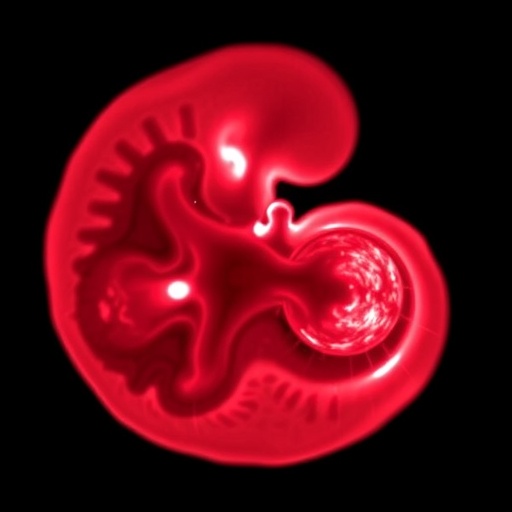In recent years, advances in fetal imaging technologies have revolutionized the way we diagnose prenatal conditions. Among these innovations, fetal magnetic resonance imaging (MRI) has emerged as a powerful tool for identifying various complications that can affect fetal health. One particular area of research is antenatal subpial hemorrhage, a rare but serious condition that can have profound implications for newborns. This condition is characterized by bleeding beneath the pia mater, the delicate tissue surrounding the brain, and its diagnosis using non-invasive methods is critical for timely interventions.
The significance of early detection cannot be overstated. Subpial hemorrhages may not present with overt symptoms but can lead to severe neurological deficits or even be fatal if not correctly identified and managed. Conventional imaging modalities, such as ultrasound, often have limitations when it comes to visualizing subtle neuroanatomical changes. This is where fetal MRI shines, offering high-resolution images of the developing brain that can reveal underlying issues like antenatal subpial hemorrhage.
A groundbreaking study published in “Pediatr Radiol” highlights the imaging spectrum of antenatal subpial hemorrhage and its implications. Researchers Libzon, Kidron, Erlik, and their colleagues conducted an exhaustive investigation into the capabilities of fetal MRI in diagnosing this condition. Their work elucidates how MRI can provide unparalleled visualization of brain structures, allowing practitioners to discern even minor hemorrhagic events that could escape ultrasound detection.
The study outlines a series of cases where fetal MRI successfully identified subpial hemorrhages that were later confirmed through autopsy findings. This form of validation is critical in establishing the reliability of MRI as a diagnostic tool in prenatal care. In the cases examined, fetal MRI demonstrated sensitivity to intricate variations in the brain’s appearance that pointed to the presence of hemorrhage, demonstrating its potential as a first-line imaging modality in high-risk pregnancies.
Understanding the pathophysiology of antenatal subpial hemorrhage is essential for comprehending its implications. Hemorrhages of this nature can arise from various causes, including trauma, vascular malformations, or even as a result of gestational disturbances. Consequently, an accurate diagnosis facilitates a thorough evaluation of maternal and fetal health profiles, allowing for tailored management strategies and improving outcomes.
The imaging protocol used in the study involved specific sequences that enhanced the detection of blood products, thus improving diagnostic accuracy. High-resolution T2-weighted images were particularly effective at highlighting areas of bleeding. The fine balance of contrast provided by MRI makes it an invaluable resource for obstetricians seeking to deliver precise diagnostic information during prenatal assessments.
In clinical practice, the integration of fetal MRI into routine evaluation pathways could significantly alter counseling and decision-making processes for expectant parents. For families facing the terror of potential neurological impairment in their unborn child, the knowledge that such conditions can be detected early—facilitating proactive measures—offers a glimmer of hope. The researchers emphasize the necessity of multidisciplinary collaboration between radiologists, obstetricians, and pediatric neurologists to create the most comprehensive approach to managing these high-stakes discoveries.
To further underscore the importance of this imaging technique, the study also provides a critical appraisal of the limitations faced in conventional prenatal imaging approaches. Ultrasound remains the first-line imaging tool; however, its dependency on operator skill and its inability to penetrate certain tissues can lead to a significant number of false negatives. Fetal MRI can complement this by providing the much-needed sensitivity required to address ambiguous or unclear findings on ultrasound.
The relationship between antenatal subpial hemorrhage and long-term neurodevelopmental outcomes has been a topic of ongoing investigation. It raises questions regarding the extent of injury that can occur even with minor hemorrhagic events. The findings from this study pave the way for longitudinal studies that track affected children into their early years, evaluating how these prenatal conditions manifest over time and influence development.
As we delve into the future, the prospects for fetal MRI in antenatal care appear bright. With continuous advancements in imaging technology, there is hope for improved resolution and quicker scan times, which would result in even more precise diagnostic capabilities. Researchers are optimistic that the utility of fetal MRI will gain further traction in clinical settings, especially as healthcare providers become increasingly aware of its potential.
The implications for clinical practice are enormous. Parents, upon receiving a diagnosis of antenatal subpial hemorrhage, can begin to explore various intervention strategies that may mitigate risks, prepare for specialized care post-delivery, and ensure that their child receives the best possible start in life. This proactive approach not only abates anxiety but also fosters engagement between parents and healthcare providers in a shared decision-making process.
In conclusion, the findings presented by Libzon et al. regarding the capabilities of fetal MRI in diagnosing antenatal subpial hemorrhage mark a significant milestone in obstetric care. This research solidifies the role of advanced imaging in understanding prenatal conditions that could otherwise compromise neonatal health. As our knowledge in this field continues to expand, so does our potential to improve health outcomes for future generations, one scan at a time.
Subject of Research: Antenatal subpial hemorrhage diagnosed by fetal magnetic resonance imaging.
Article Title: Antenatal subpial hemorrhage diagnosed by fetal magnetic resonance imaging: imaging spectrum and autopsy findings.
Article References:
Libzon, S., Kidron, D., Erlik, U. et al. Antenatal subpial hemorrhage diagnosed by fetal magnetic resonance imaging: imaging spectrum and autopsy findings. Pediatr Radiol (2025). https://doi.org/10.1007/s00247-025-06353-9
Image Credits: AI Generated
DOI: https://doi.org/10.1007/s00247-025-06353-9
Keywords: antenatal subpial hemorrhage, fetal MRI, imaging spectrum, autopsy findings, prenatal diagnosis.




